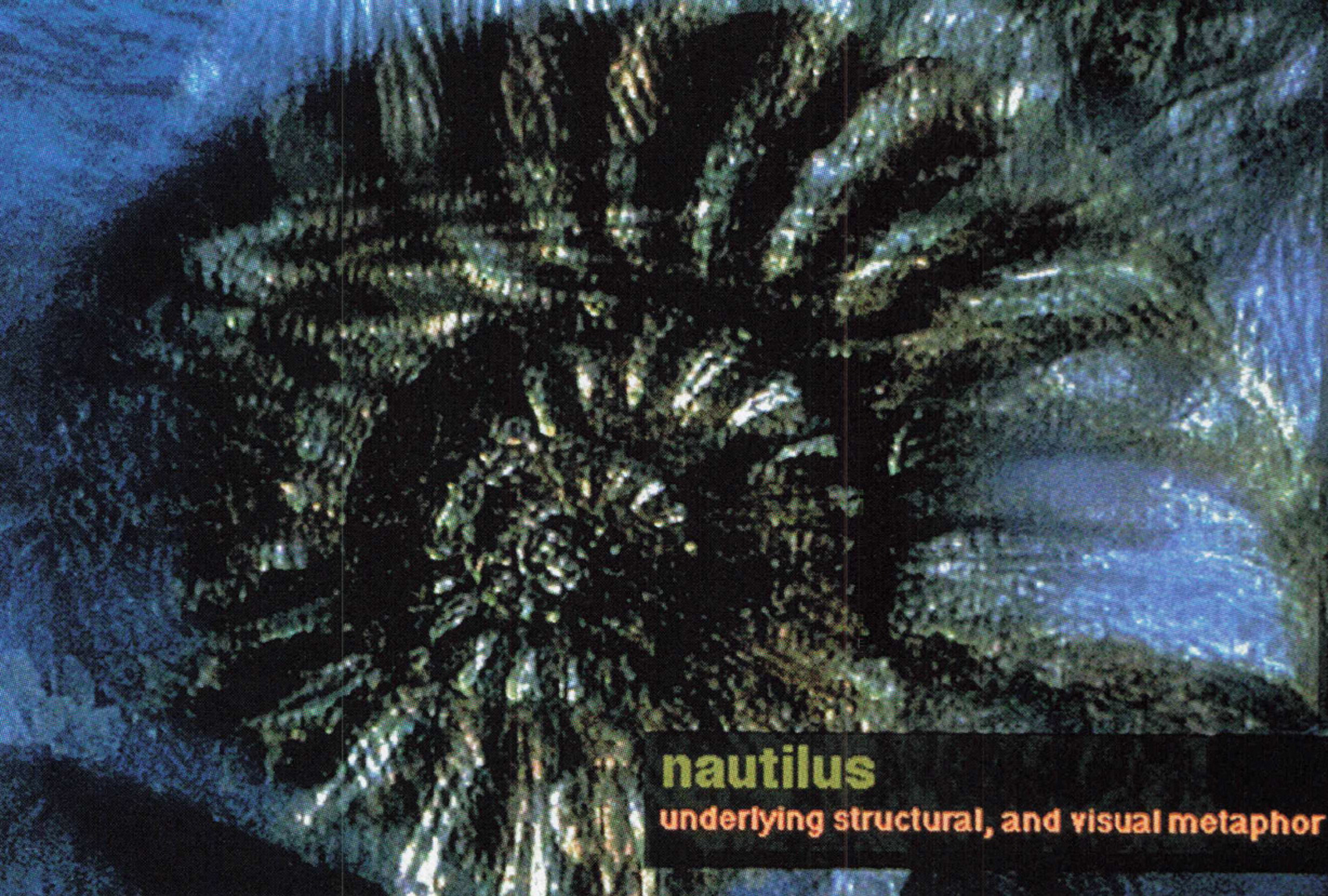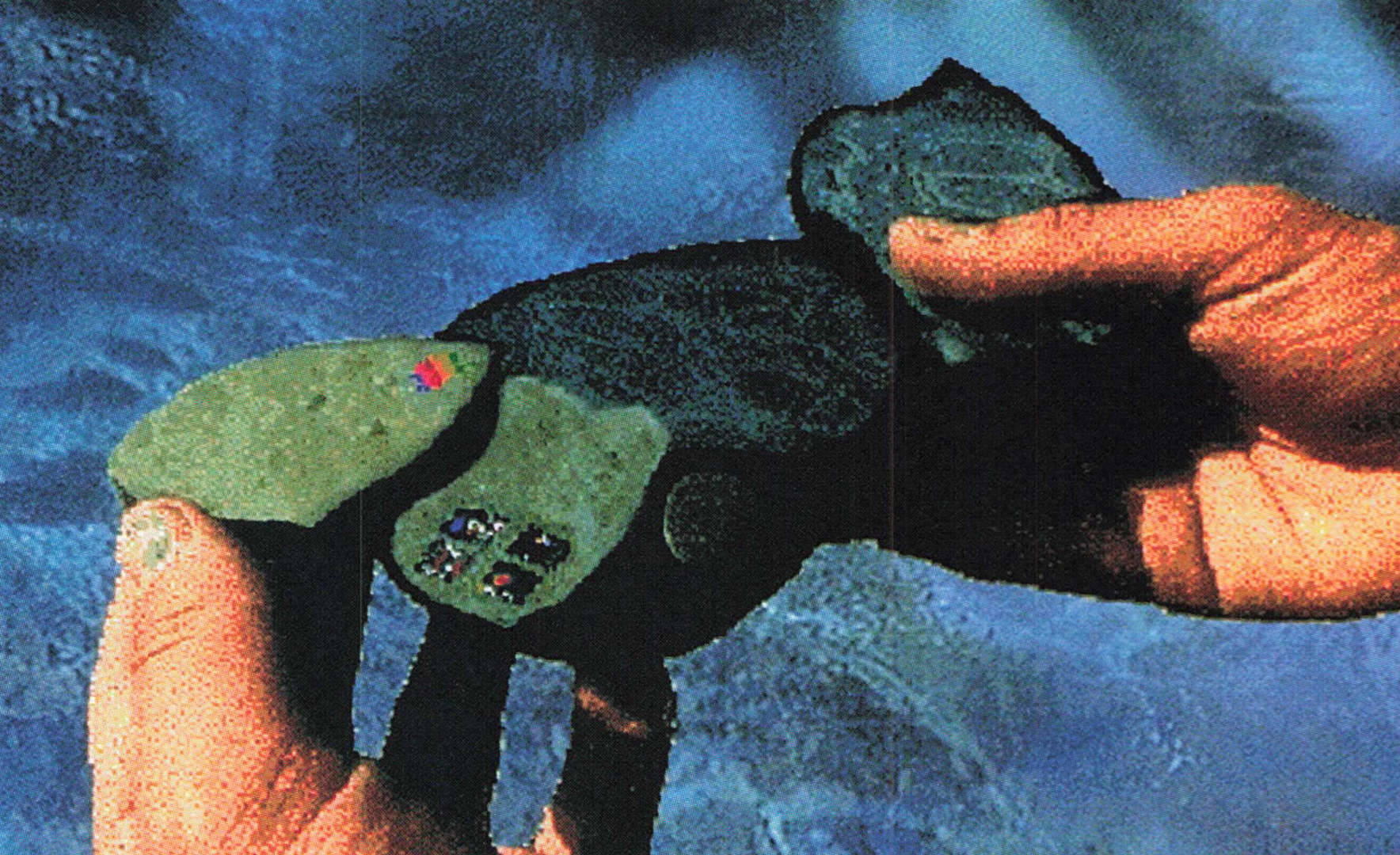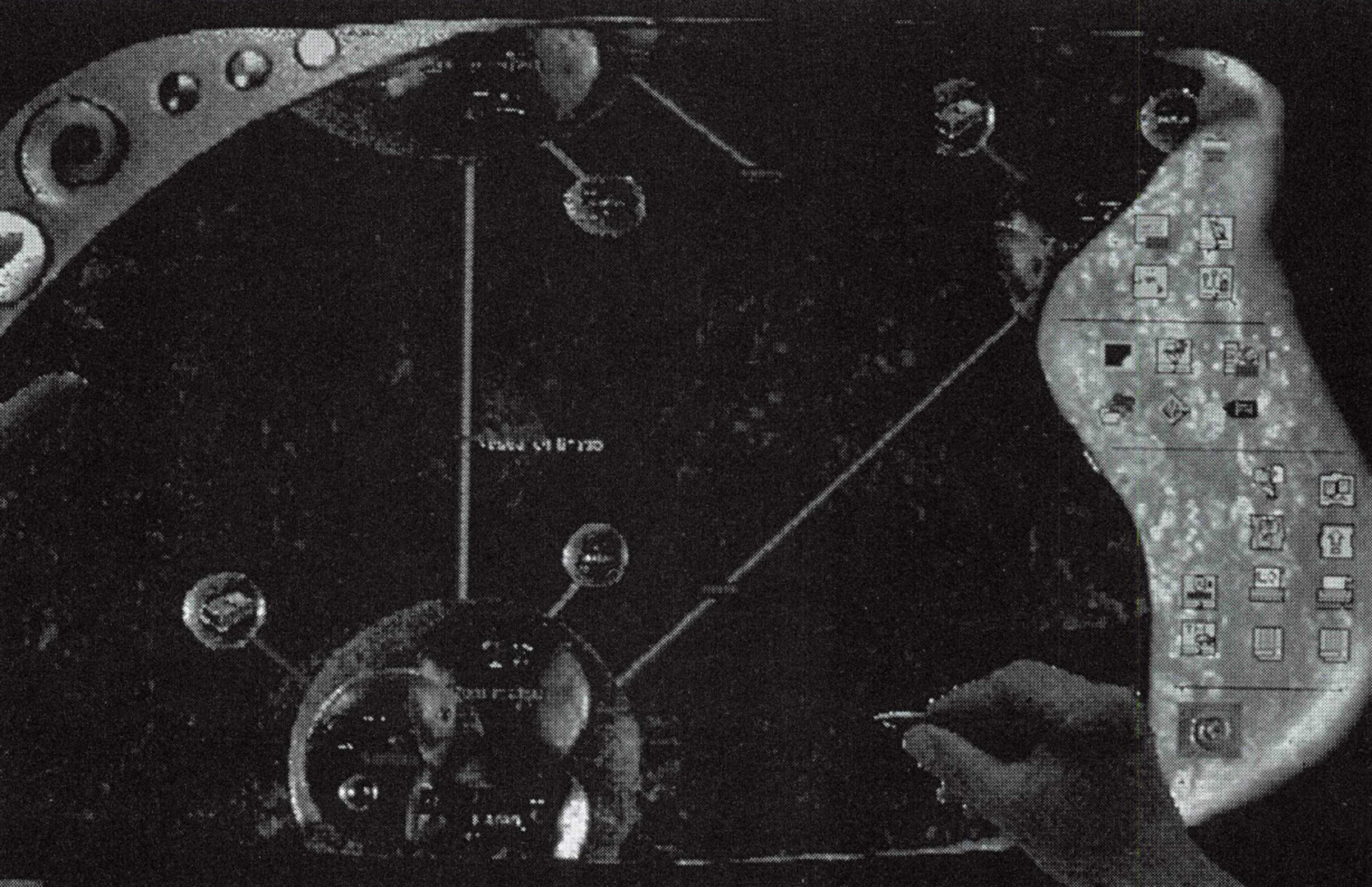“Computers for the Rest of Us” by Baker
Conference:
- SIGGRAPH 1993
-
More from SIGGRAPH 1993:


Type(s):
Entry Number: 14
Title:
- Computers for the Rest of Us
Program Title:
- Designing Technology
Presenter(s):
Collaborator(s):
Project Affiliation:
- Royal College of Art
Description:
Summary
The 1992 Apple competition brief was distributedto seven universities worldwide. The participating students, who formed interdisciplinary groups, were asked submit product ideas based on the theme of ‘scalable computing.’ The brief asked for the design of the products and interfaces for three computers to be used in a three-to-five year future scenario.
The Interface Metaphor
Nautilus was the name given to the interface on all three products. It represents the underlying structural metaphor behind the interaction, and is broadly based on the metaphor of information flowing. The Nautilus metaphor came about through early observations about the kinds of language people use to talk about information, for example: navigation, data flowing, data streams, surfaces, depth, filtering and distilling. People also refer to being lost in a ‘sea of information,’ or ‘oceans of data.’
The metaphor fitted with the general philosophy to explore softer styIing forms and more naturalistic feeling interfaces, a stark contrast to the traditional rectilinear boxes that have become familiar.
The metaphor also supports the ideas of networks and agents: rivers represent connections in networks (data flowing) and fish, agents. One of the key ideas was to use the concept of depth in interaction. Depth represents different levels of interaction complexity so that user tasks, or applications, are located near the ‘surface,’ while more organizational and computer-specific tasks are represented on ‘deeper’ levels.
The Computers
The Crab is the smallest of the three devices. Perhaps it is best described as a personal digital assistant, a life manager that takes the contents of a user’s pockets and attempts to make them work electronically. A few of its typical tasks be to store and retrieve small bits of information such as phone numbers, maps, appointments. It also has the functionality of a ‘Walkman’, a camera, and a personal information store. These functions are downloaded from a central network when required. The form of the crab echoes the ideas of depth in the interface by using two levels. It also includes several solutions to the problems of limited screen size such as a tilting/scrolling technique that couples with a fish-eye lens effect on the edges of the screen.
The Manta computer is a pen-operated portable desktop device. Its central idea was to allow users to create ideal individualized working environments comprised of applications that the user builds from component tools and functionality modules. The environment is navigated through using a ‘depth dial zoom’ and a trackerball.
The Dorsal Computer is essentially a powerful workstation. Its primary function would be to perform complex information retrieval tasks from various networks. It will also help to store/retrieve and visualize complex data. The Dorsal uses infrared, wireless, short-range networks to communicate and add functionality to the Crab and Manta.
Additional Images:







